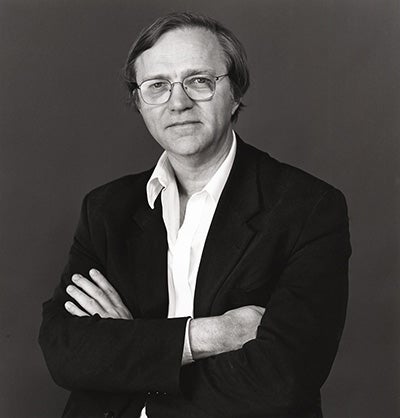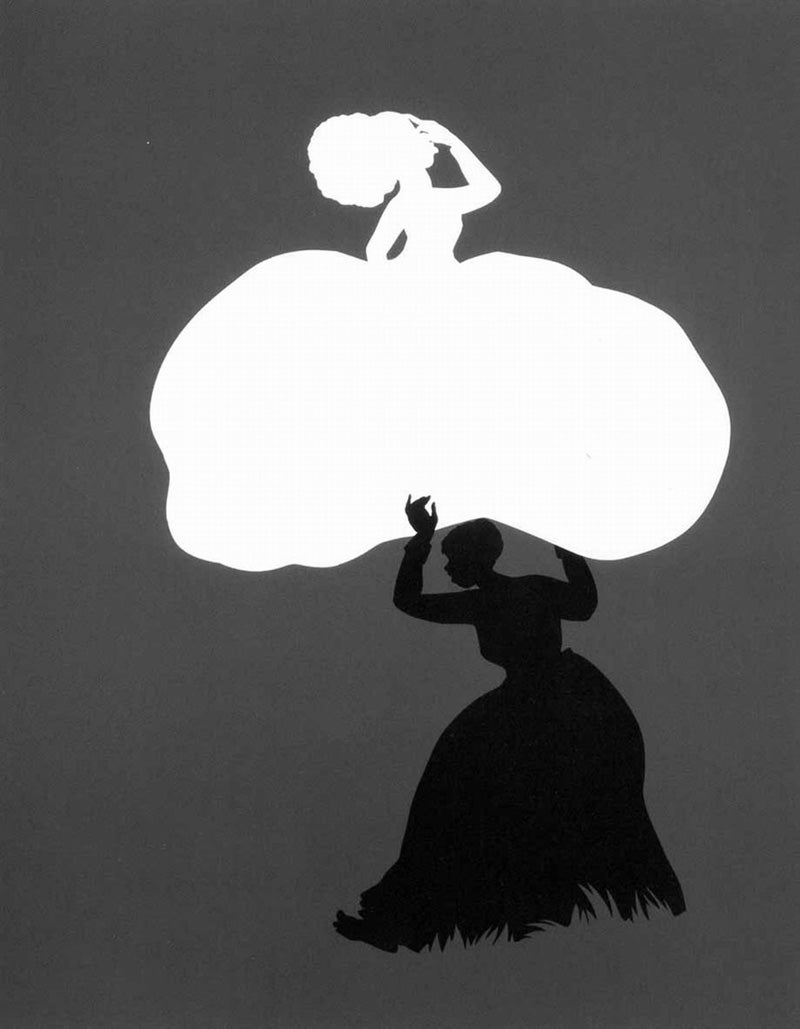Robert Storr—critic, curator, painter, and current dean of the Yale University School of Art—will present the Fowler Lecture at the School of Architecture and Allied Arts at 6 p.m., March 6, in Room 177 of Lawrence Hall at the University of Oregon. The lecture will be live-streamed at aaa.uoregon.edu.
Storr’s lecture, “Kara Walker: Shadow Caster,” is in conjunction with “Emancipating the Past: Kara Walker’s Tales of Slavery and Power,” an exhibition at The Jordan Schnitzer Museum of Art (JSMA) on the UO campus through April 6.
The lecture is cosponsored by the Department of Art and made possible by the George and Matilda Fowler Endowment Fund and Academic Affairs.

Above: Robert Storr, dean of the Yale University School of Art,
will present the Fowler Lecture at the School of Architecture and
Allied Arts at 6 p.m., March 6, in Room 177 of Lawrence Hall.
Storr will explore Walker’s work through the symbolism of the shadow, drawing on historic and metaphoric connections. Walker, the youngest artist ever to receive a MacArthur “genius” grant, was honored in 2007 as one of TIME magazine’s “100 Most Influential People in The World, Artists and Entertainers.” Her thought-provoking exploration of the intersection of race, gender, and sexuality has garnered much acclaim, especially for the manner by which she examines the psychology of slavery through fictional narratives.
Storr has been described as a “vital link between the museum world and academia” and is considered one of the most influential Americans in the art world. He served as senior curator in the Department Painting and Sculpture at the Museum of Modern Art, New York, from 1990 to 2002, and became the first American commissioner of the Venice Biennale in 2007.
The exhibition at JSMA includes one of Walker’s most critically acclaimed large-scale print portfolios, “Harper’s Pictorial History of the Civil War (Annotated),” in which she juxtaposes her trademark silhouettes with original illustrations from the 1866 Harper’s magazine about the Civil War.
“The artworks presented in this exhibition display the range of approaches she has taken to the silhouette and the human figure, to printmaking, and to narrative,” says Jessi DiTillio, assistant curator of contemporary art at the museum. “Often using outmoded technologies or old-fashioned techniques like silhouettes, eight-millimeter film, or nineteenth-century printmaking, she brings contemporary perspectives into direct confrontation with the artifacts of history.”
Storr has curated exhibits at the Museum of Modern Art including, among many others, Elizabeth Murray (2005), Max Beckmann (2003) (in collaboration with the Centre Georges Pompidou in Paris and the Tate Gallery in London), and Gerhard Richter: Forty Years of Painting at the Modern, for which he wrote the accompanying catalog. In addition to catalogs and brochures published in conjunction with numerous exhibitions, Storr is the author of Philip Guston (Abbeville, 1986), Chuck Close (with Lisa Lyons, Rizzoli, 1987), and the forthcoming Intimate Geometries: The Work and Life of Louise Bourgeois. He has also authored dozens of articles and catalogs in numerous other publications.
Storr is a contributing editor to Art in America and Grand Street and writes frequently for Artforum and Parkett. Since 1982 he has been a regular contributor to Art Press (Paris) and currently writes a bimonthly column for Frieze (London). In addition, his criticism has appeared in The New York Times, The Washington Post, The Village Voice, Arts Magazine, Art & Design, Tate/The Art Magazine, Interview, Galleries Magazine, and elsewhere. A member of the editorial board of the College Art Association's Art Journal from 1985 to 1995, he coedited two issues of the magazine devoted to censorship in the arts.
In 2000 the French Ministry of Culture presented him with the medal of Chevalier des Arts et des Lettres.
“To hear [Storr] speak, even briefly, … is a privilege,” writer Rozalia Jovanovic noted in Blouin ArtInfo following Storr’s remarks at the Blouin Creative Leadership Summit in September 2013 in New York. Jovanovic noted several of Storr’s comments at the summit, including "I love the polemical perversity of [Matisse’s] argument that a good painting was like an armchair into which a businessman could settle at the end of the day. I have been privileged to know a lot of businessmen with a lot of good paintings and they’ve been generous in allowing me to sit in their armchairs and look at their work.... I think Matisse was fundamentally wrong. Culture is not something you are rewarded for in consolation for something else."

Above: African/American, 1998, linocut on paper (22/40), 44 x 62 inches, by Kara Walker. Collection of Jordan Schnitzer Family Foundation. © Kara Walker

Above: Untitled (Scene #18 from “Emancipation Approximation” portfolio), 1999–2000, screenprint (7/20), 44 x 34 inches, by Kara Walker. Collection of Jordan Schnitzer Family Foundation. © Kara Walker
